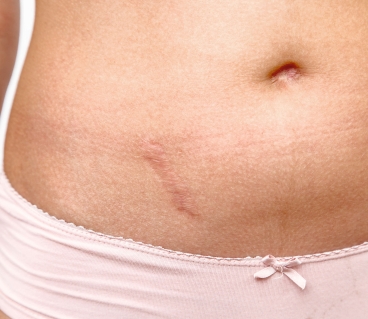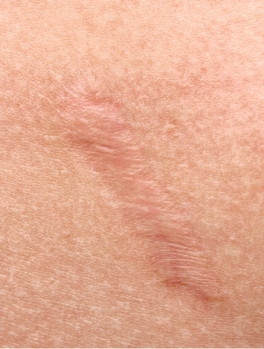How can I help my skin heal better after surgery?

After surgery, the skin begins a healing process to repair itself. This process takes place in several stages and can last up to two years. During this period, regular specific care is essential to promote optimal healing and improve the appearance of the skin.
Simple everyday gestures
Cleaning the scar and caring for the wound
Why?
Good wound hygiene is important for the healing process, and helps reduce the risk of infection that could delay this process.
How?
- Carefully follow the surgeon's advice
- Clean the wound with appropriate care and change dressings according to the prescribed protocol and recommendations provided
Apply healing, repairing and protective care products
Why?
To soothe discomfort and promote repair
How?
From the earliest stages of healing, apply a protective repairing treatment several times a day.
The earlier and more regular the application, the better the results.
Keep a close eye on the wound
Why?
To detect the slightest sign of infection or poor healing.
How?
In the event of pain, color change, heavy discharge or bad odor, it's important to consult a doctor.
Massage the scar regularly
Why?
To soften tissues, stimulate blood circulation and reduce adhesions to improve scar appearance.
How?
Once the wound is closed, combine the application of healing products and creams with the customized formula, massaging regularly twice a day for 5 minutes.
As the healing process can take up to two years, it's important to persevere with the massage treatments.
Protecting scars from the sun
Why?
Exposure of the scar to the sun can slow healing and induce hyperpigmentation, with the appearance of persistent brown marks.
How?
Protect the scar from the sun with a bandage, a piece of clothing or by applying a very high protection sun cream (SPF50+) that filters out both UVA and UVB rays.

What are the 3 main stages of skin healing?
Healing is a skin tissue repair process that takes place in three phases:
Inflammatory phase (2 to 7 days): During this period, the skin becomes red and warm in reaction to the surgery, indicating that the body is defending itself.
Deep healing phase: Skin tissue regenerates, forming fleshy buds rich in blood vessels and cells, promoting deep skin repair.
Remodeling phase: Approximately two weeks after surgery, the skin gradually closes around the edges of the wound. This superficial remodeling phase can last up to two years.
Doctor's stamp
Want to read on?
This access is reserved for professionals, registered on Pierre Fabre For Med.
To access the full content, please register or log in if you already have an account.